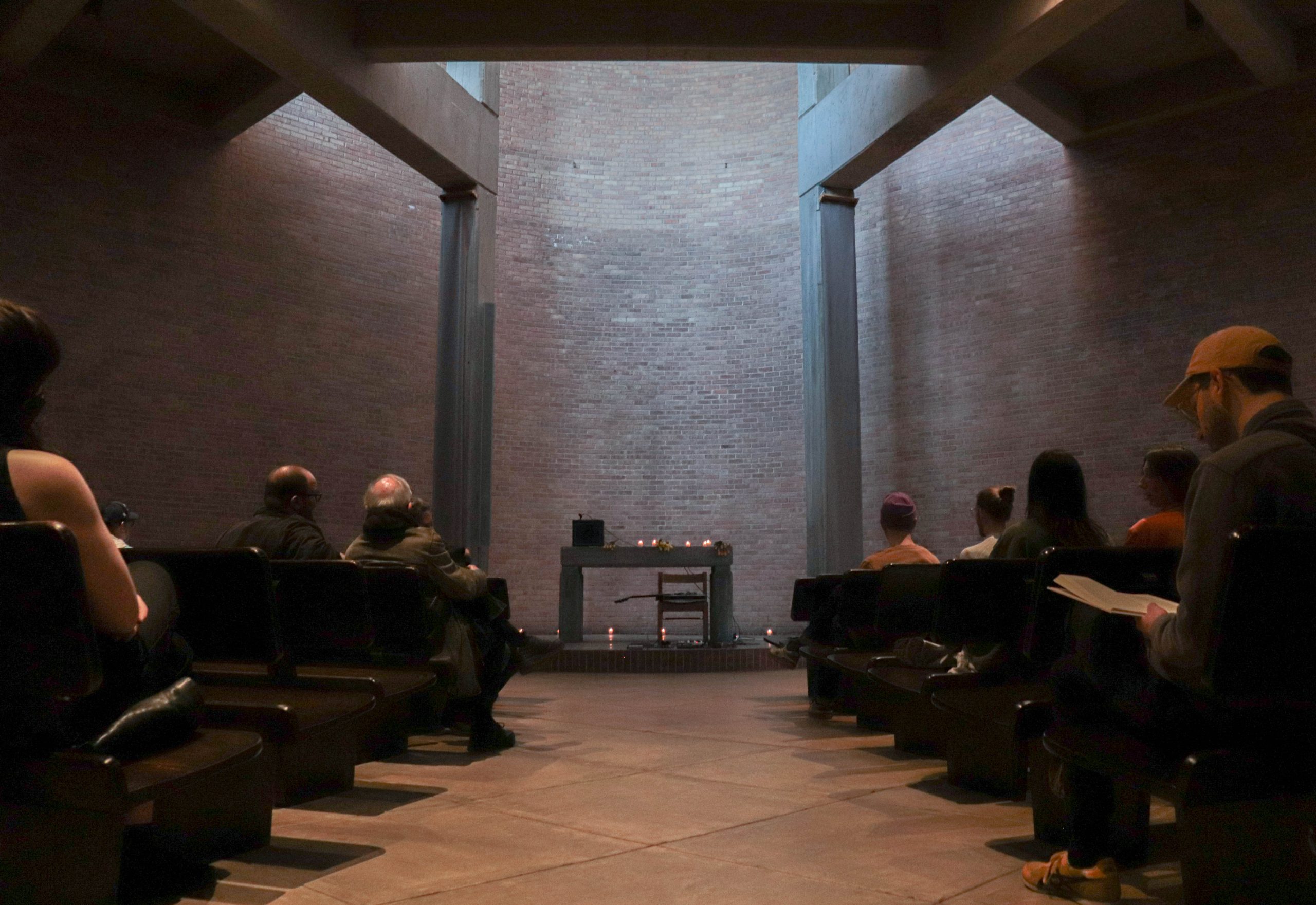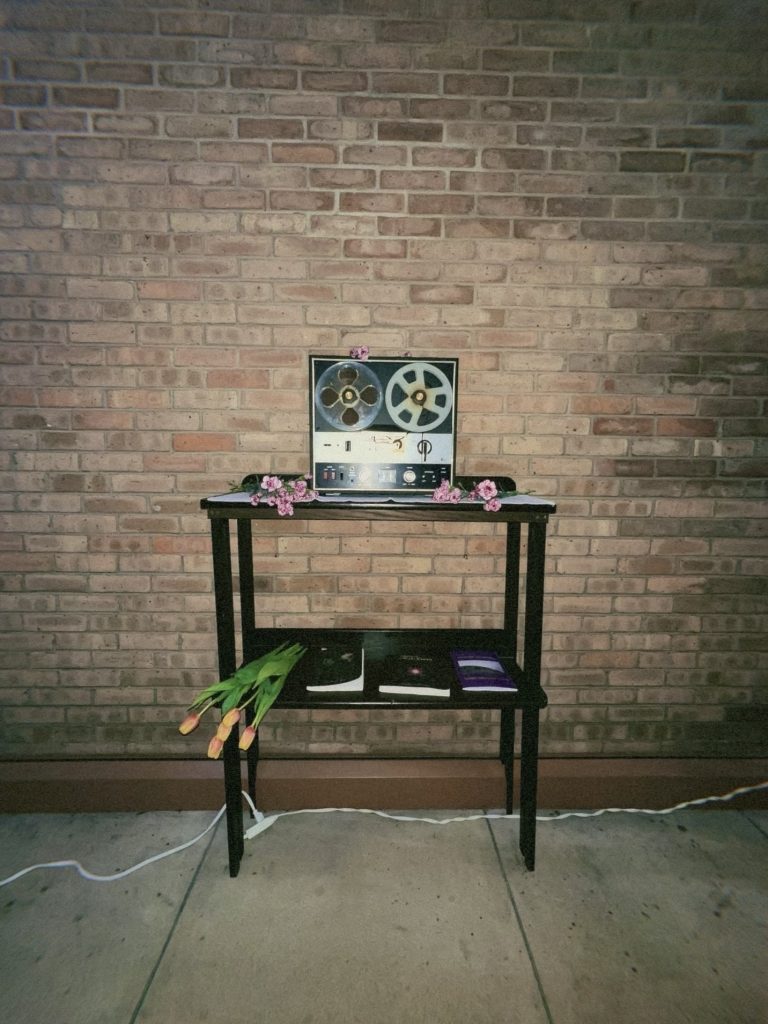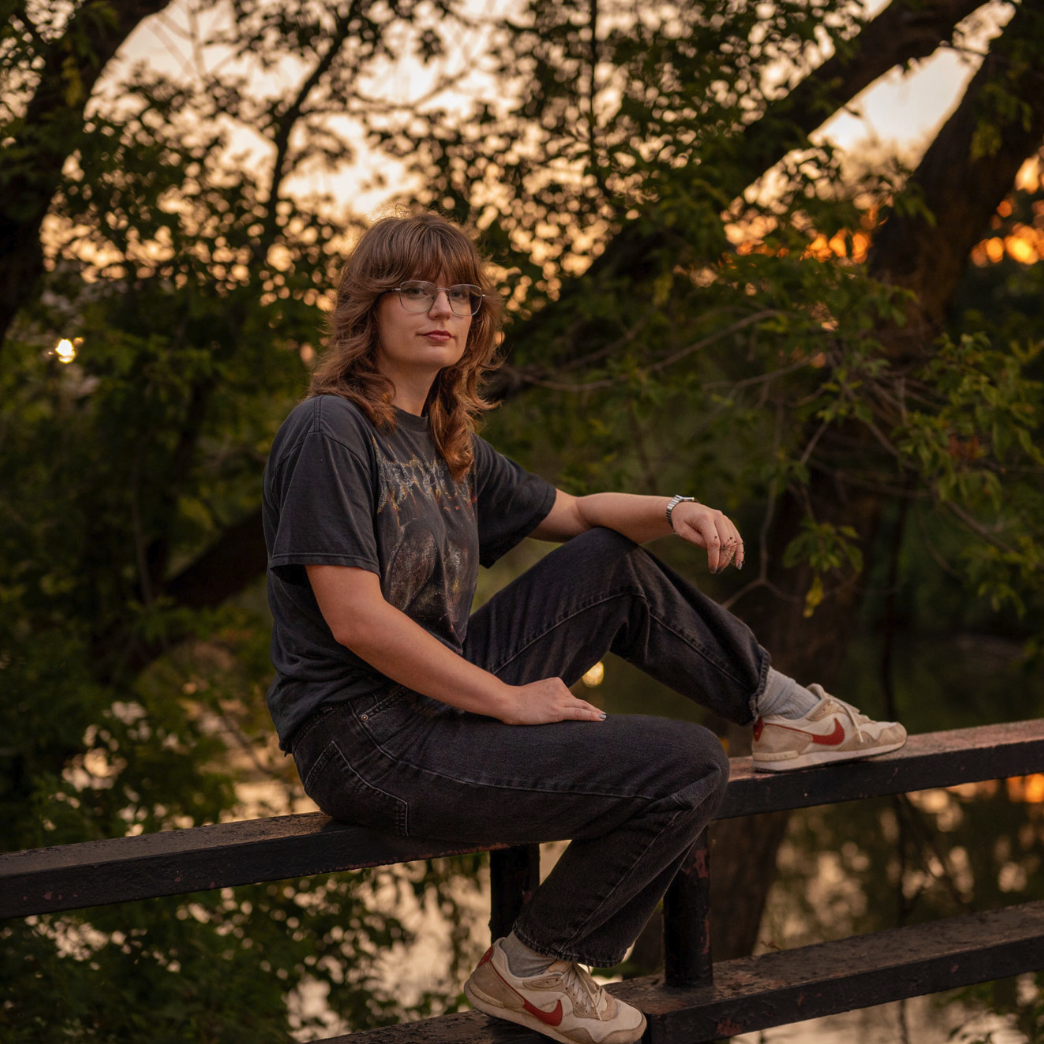In the Echoes of Pauline Oliveros: The Practice of Deep Listening
Livy Snyder shares her experience as a participant in an immersive Deep Listening program put on by StretchMetal and Experimental Sound Studio in partnership with the Gene Siskel Film Center.

Deep Listening is a two-part program organized by StretchMetal and Experimental Sound Studio in partnership with the Gene Siskel Film Center. It pays homage to the late composer Pauline Oliveros and the practice called Deep Listening which “explores the difference between the involuntary nature of hearing and the conscious nature of listening.”1 The first part of the program includes a workshop guided by Veronica Anne Salinas and a performance by Zane Morris at Augustana Lutheran Church. The second part involves a Deep Listening exercise facilitated by Avery Riel and a debut screening of Deep Listening: The Story of Pauline Oliveros by Daniel Weintraub. While there is much to write about the program, this essay focuses on Salinas’s workshop.
“Listen to your own breath,” Veronica Anne Salinas advised, a seemingly easy thing to do. The audience was instructed to place their hands over their ears and breathe slowly and deeply while vocalizing their breath. She inhaled with a higher pitch and raised her shoulders; then exhaled with a lower pitch, slumping her shoulders. “Closing your eyes might help,” she added, acknowledging potential awkwardness.
My tense, hyperaware body took more time than others to relax and start sounding.2 My eyes darted around the vastness of the Augustana Lutheran Church, and I felt the presence of about thirty people spread out in wooden pews breathing. My neighbor, a generous participant, breathed so loudly that I envied their confidence. After several minutes, I closed my eyes with my hands over my ears and let out a stilted but audible breath that sounded more like a whistle than wind. I expected myself to cringe; instead, I was happily surprised to feel relief. Pushing through my hesitations and with every exhale, my anxiety dissipated. I thought about my anxious dog and when we first met the vet suggested yawning or taking a long breath as a signal to convey calmness.
As it turns out, yawning is calming for people too. As Oliveros writes in her book Deep Listening: A Composer’s Sound Practice, the purpose of these breathing exercises is to claim our present awareness and the act of vocalizing the breath. While there are many breathing exercises from diverse traditions,3 the technique of toning which vocalizes breath has a “direct resonance on the body that it has a calming (and therefore healing) effect”4
For the next step, we uncovered our ears and continued breathing audibly. I let out a high-pitched sigh. When I dared to start sounding louder, I wondered: how much breath do I have and what’s the longest I can elongate it? What if I sighed in a lower register like my neighbor? Does anyone else have a similar sound to me? As each of us changed our sound-making, every exhale harmonized and reverberated throughout the chapel, like a choir of ghosts.
As the workshop progressed, Salinas asked the audience to imagine a sound—like rain hitting the pavement or leaves rustling in the wind, or a bird chirping. Make that sound. Then, echo what you heard from someone else. This was for particularly brave, creative, and experienced sound makers–unlike me, as I began to sweat when I heard this instruction. Participants recreated the audible breathing sounds from the first exercise, it felt like a comfortable place to start, and the breathing blended in with the HVAC. It sounded like a tuning exercise in an orchestra. Eventually, the sounds expanded into yawns, whistles, puffs, hums, squeaks, wheezes, croaks, and more beyond description that I am not capable of describing. In a moment of crescendo, someone bursted out “ACHOO!” and laughs echoed around the room. It was okay to admit this was awkward and funny, but the laugh illustrated the sound’s ability to travel across the space–creating rhythm from mimicry.

At this point, my discomfort decreased. I became part of the “we,” “us,” and “our” unified by sound. We felt comfortable elongating our air, holding hands, and walking around the space to create cyclical movements like a snake (for which the listening exercise was named) and the workshop came to an end.5
Talking with Salinas post-workshop, she described the process of activating community sound:
“When I’m guiding exercises, I think about it like creating environments…And I like to start with a grounding exercise that’s start[ing] with your breathing and listening to yourself. Then listening outside of yourself so it’s just sort of zooming in and then zooming out — and it’s reflective about how we operate in society and in different community spaces, from the focal to the global. I feel like that can be, in some ways for some people, a very radical thing to hear themselves in a space with other people and be vulnerable and allow that side of them to just release. I hope it’s not too terrifying or if it is, it may be like it is some sort of relief that is, you know, relief from stress or, I don’t know, some sort of absolute.”
I wish I could claim that I was deeply familiar with Pauline Olivero’s work and the concept of Deep Listening before I walked into this experience, but my knowledge was solely based on Oliveros’s Deep Listening cassette in my partner’s tape collection.6 I arrived at the first workshop anticipating meditative drones and with a keen interest to learn more. I soon discovered that learning more would require me to step out of my comfort zone of passive experience. I had to ask myself how much I really knew my voice, my body, to truly listen.
Listening, to Oliveros, is distinct from hearing. While the two words are often used interchangeably, hearing is the physical means that enables perception and listening gives attention to what is perceived both acoustically and psychologically. Cultural history and experiences influence listening.7 Oliveros explains “Listening is a process that occurs at varying speeds. It can be like a bolt of lightning–all at once at the moment or it can consist of intuitive guesses and thoughtful references to past experiences. Raw listening, however, has no past or future. It is the way of the moment.”8
Engaging with Deep Listening can be challenging. In a culture that’s transformed into an incessant whirlwind of rapidity, providing little opportunity for respite, let alone reflection, Deep Listening offers resistance or counterbalance, advocating for a deliberate slowing down and cultivation of connection. It requires presence, the ability to listen to both one’s own voice and others’, ultimately culminating in an enriching communal act.
Footnotes
- Deep listening as described on the Deep Listening Center’s website: https://www.deeplistening.rpi.edu/deep-listening/ ↩︎
- In Olivero’s book Deep Listening: A Composer’s Sound Practice, sounding is described as “another way to deepen breath. Any kind of vocal sound can be used to improvise.” ↩︎
- About breathing traditions, Oliveros references Denis Lewis’s book Free your breath, free your life: how conscious breathing can relieve stress, increase vitality, and help you live more fully. ↩︎
- Pauline Oliveros, Deep Listening: A Composers Sound Practice, 11. ↩︎
- The program transitioned to a performance by Zane Morris after the workshop. You can watch a recording of the performance here: https://www.youtube.com/watch?v=Z5EMaj_t9CE ↩︎
- Give it a listen here : https://www.youtube.com/watch?v=U__lpPDTUS4 ↩︎
- Pauline Oliveros, Deep Listening: A Composers Sound Practice, xxiii. ↩︎
- Pauline Oliveros, Sounding the Margins: Collected Writings 1992-2009, (Kingston, NY: Deep Listening Publications, 2010) 6–7. ↩︎

About the author: Livy Onalee Snyder’s writing has appeared in DARIA, Newcity, Ruckus, TiltWest, Signal, and more. She graduated with her Masters from the University of Chicago in 2021. Currently, she holds a position at punctum books. Read Livy’s writing for Sixty here.